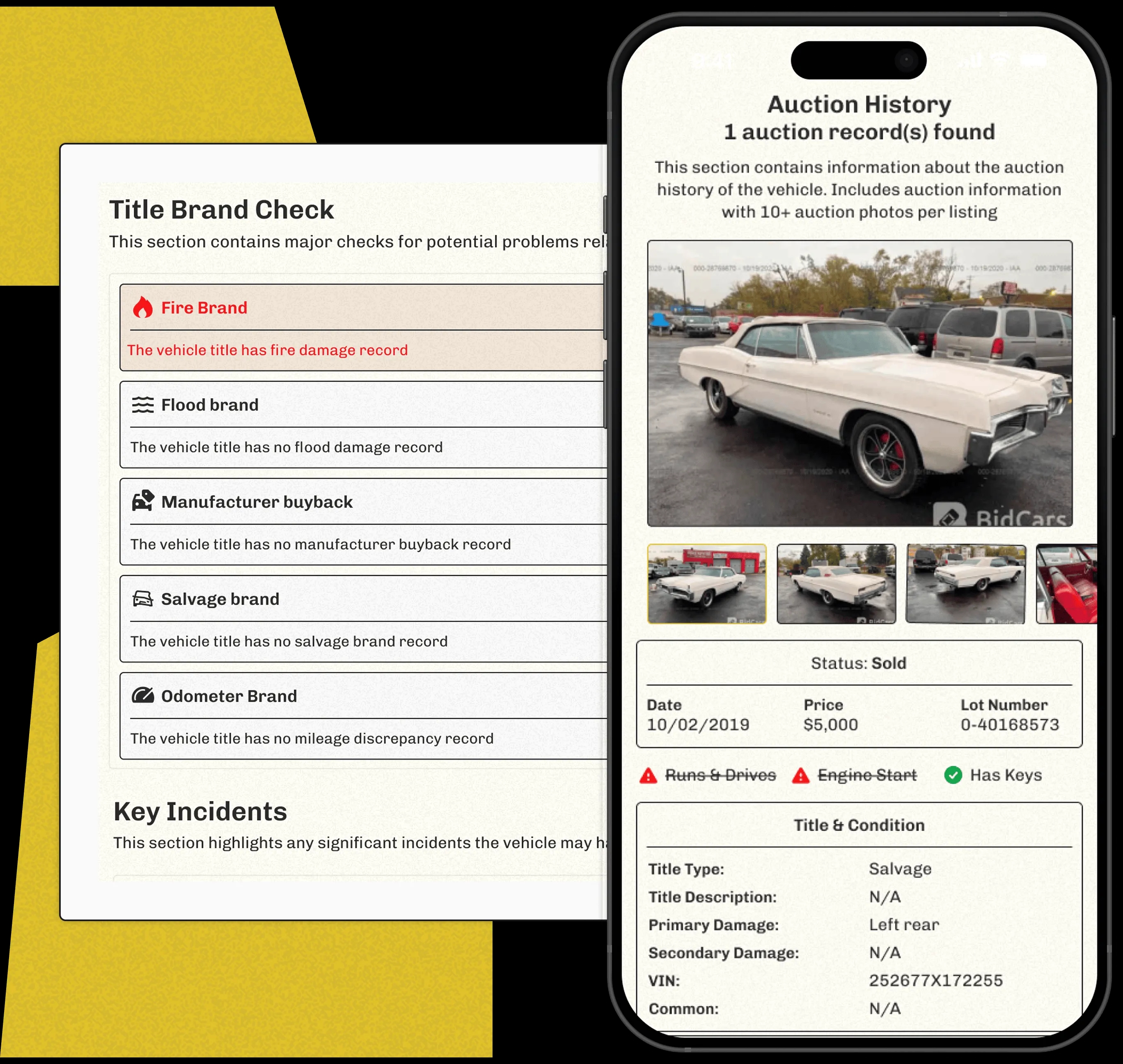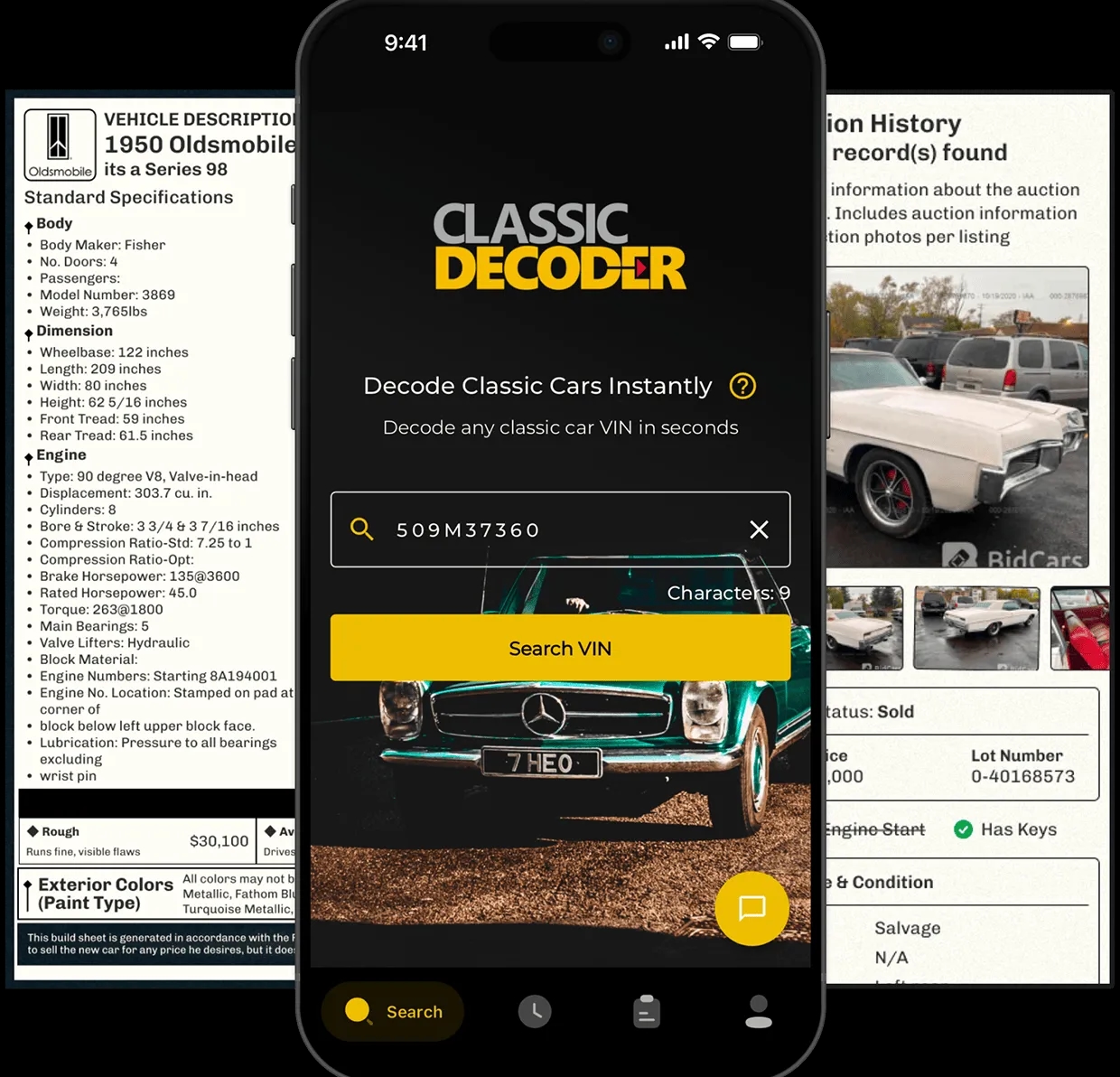1970 Plymouth Cuda
The 1970 Cuda? Pure muscle car cool! A legendary Mopar, its history's filled with racing glory. Think aggressive, shark-like lines, that iconic fastback, and powerful engines. A true icon of the era, instantly recognizable and still wildly popular.
Decode Classic VINs to Get Vehicle History Report and Build Sheet
History of the Plymouth Cuda
The journey of the Plymouth Cuda began in 1964, initially starting as a strong contender in the growing pony car segment. With a compact design aimed at providing a stylish ride without skimping on comfort, the early Barracudas laid the groundwork for what would become a legendary name.
The real game changer came in 1970 when the Cuda transitioned to the E-body platform. This modification gave it the muscle and style that would define muscle cars for decades. With aggressive lines and a more spacious interior, it was built to thrill.

1970 Plymouth Cuda Models:
Select the vehicle's model to see the correct data for it.
How Much is Plymouth Cuda Worth?
Original MSRP :$3,164.00
Outstanding
Clean
Average
Rough
1970 Plymouth Cuda Specs
Interested in buying a classic car or selling one?
Access detailed history reports for classic vehicles from hundreds of manufacturers.
- Accident Records
- Theft Records
- Loan & Lien Information
- Auction Information
- Salvage Information and more

Performance and Options
At the heart of the 1970 Cuda's reputation is its performance pedigree. Available with several engine configurations, including the beastly 455-hp 426 Hemi V8, it offered something for every speed enthusiast. Unique features like the "Track Pak," Rallye wheels, and exotic color options such as "Plum Crazy," further highlighted its bold persona.
For those diving into the authenticity of their vintage ride, a detailed car build sheet can unfold its factory-original features, an invaluable asset for restoration enthusiasts.
Learn more about a classic car: Get Build Sheet by VIN.
Access reproduced classic build sheets to learn more about your classic vehicle details.
- Standard Specifications
- Original Base Price
- Standard & Optional Equipment
- Exterior & Interior Colors
- VIN ID & Location description

Famous Owners of the Plymouth Cuda
Kevin Hart
Known for his sharp humor, Kevin Hart is also notable in the car community for his eclectic collection. His ownership of a Hellcat-swapped 1970 Plymouth Barracuda, boasting a hefty 700 horsepower, speaks volumes about his taste for adrenaline-packed rides. It even featured in an infamous crash, only adding to its lore.
Nicolas Cage
The Academy Award-winning actor Nicolas Cage once owned a pristine 1970 Plymouth Hemi 'Cuda. This particular model was celebrated for its originality, making headlines when it fetched $605,000 at an auction. Such numbers underline the Cuda's rarity and appeal in the classic car circuit.
Craig Jackson
Craig Jackson, at the helm of Barrett-Jackson, one of the most prestigious car auction houses, owns a 1970 Hemi 'Cuda that stands as a testament to the vehicle's storied reputation. With only fourteen of these built, the ownership itself is a nod to his profound appreciation for automotive history.
Interested in Buying or Selling a Classic Car?
When it comes to trading classic cars, understanding a vehicle's past is crucial. A thorough can reveal critical facts like accident and theft records, loan and lien information, auction happenings, and more.
Accident Records
Theft Records
Loan & Lien Information
Auction Information
Salvage Information and more
For those with vehicles from pre-1981, a could be invaluable in navigating these nostalgic roads.
1970 Plymouth Cuda Gallery














Pop Culture and Legacy
The Plymouth Cuda is more than a car; it's a cultural symbol, often starring in movies and TV shows, signifying the spirit of American muscle cars. From "Nash Bridges" to being the subject of loving episodes and enthusiast narratives on platforms like YouTube, its cultural significance is immense.
The tools can aid in verifying the lineage and authenticity of these legends, ensuring enthusiasts are investing in genuine heritage.
Whether it's checking a for clarity or understanding the depth of a vehicle through a , these resources keep the legacy of classic cars like the Plymouth Cuda alive—and roaring.
Classic VIN Decoder App |Now available on both Android and iOS!
At Classic Decoder, we believe that developing a mobile app is a great way to extend our classic car data solution hub to as many users as possible across the globe. Our app is built with users and precision in mind. It holds the key to unlocking the history and details of any retro car at your fingertips. It also comes with fascinating and user-friendly features that make it stand out from other mobile apps designed for this purpose.
The Classic Decoder app lets you decode and lookup any classic VIN in a flash. Access accurate vehicle information and history, make an informed decision faster, and buy and trade in classic cars with confidence.

Download The Classic Decoder App now.
Some unique features include:
- Support all classic VIN lengths from 5 to 13 digits
- Support classic cars produced from 1910 – 1980
- Online Garage features – to add and manage your vehicles
- 24/7 Customer Support
- Easy onboarding for first-time users
Explore Plymouth Cuda from Other Years
Frequently Asked Questions
Well, the '70 Cuda, it's kind of a big deal, you know? It's got that aggressive, sharp-edged styling that really set it apart. Unlike some of its contemporaries, it wasn't just about brute force; it had a certain elegance, a sleekness to its lines. Think of it like this: other muscle cars were the brawlers, but the Cuda was the stylish brawler, if you catch my drift. Plus, those taillights? Iconic. Absolutely iconic. They're instantly recognizable, even today, and they really captured the spirit of the times. The overall design is just… unforgettable.
Oh boy, the engine choices were pretty wild back then. You could get anything from a relatively tame 318 cubic inch small block, though nobody really bought those, to the ferocious 440 Six Pack, which was like, three carburetors screaming all at once! Or, if you were feeling really ambitious (and maybe a little crazy), you could spring for the legendary 426 Hemi – a true beast, seriously. Choosing the right engine was like picking a weapon; it completely changed the car's personality. That's not an exaggeration either – they were seriously different driving experiences.
This is a big one, and there's no simple answer. It's a bit like the stock market, honestly; a pristine, numbers-matching, original example with the Hemi? That's a very different story than a nicely restored car with a slightly different engine, see? Even minor details - the interior color, the presence of specific options - can impact the value significantly. Finding a well-preserved, all-original car is like discovering buried treasure, so to speak. Think of it this way: a fully restored show car can fetch a much, much higher price than one that's been tinkered with over the years. That's the thing about classic cars.
Like any classic car, you need to be prepared for some quirks; that's just part of the charm (and the challenge). These cars aren't exactly known for their low maintenance, so you should prepare for some mechanical headaches if you are thinking about buying one. Common issues might include things like carburetor problems, electrical gremlins (those old wiring harnesses can be a nightmare!), and issues with the braking system. It’s a bit like owning an old house; it needs a good amount of attention and care to maintain it and keep it in shape. But hey, that’s what keeps it interesting!
Finding parts can be a bit of a treasure hunt, but there are several good options. Online forums are great for connecting with other enthusiasts; it’s a kind of community that's super helpful. Plenty of classic car parts suppliers specialize in Mopar (that's Chrysler, Dodge, Plymouth and AMC) parts, and you can often find what you need there. Lastly, don't underestimate the power of local classic car shows and swap meets – you can sometimes find rare parts this way, just be sure to check the condition and originality carefully.

